Is Dry Firing Bad for Your Gun? A Complete Guide with 4 Practice Tips
There are many misconceptions and misinformation regarding the topic, is dry firing bad for your gun? There are advantages to using an unloaded gun, but at the same time, doing so can damage your weapon.
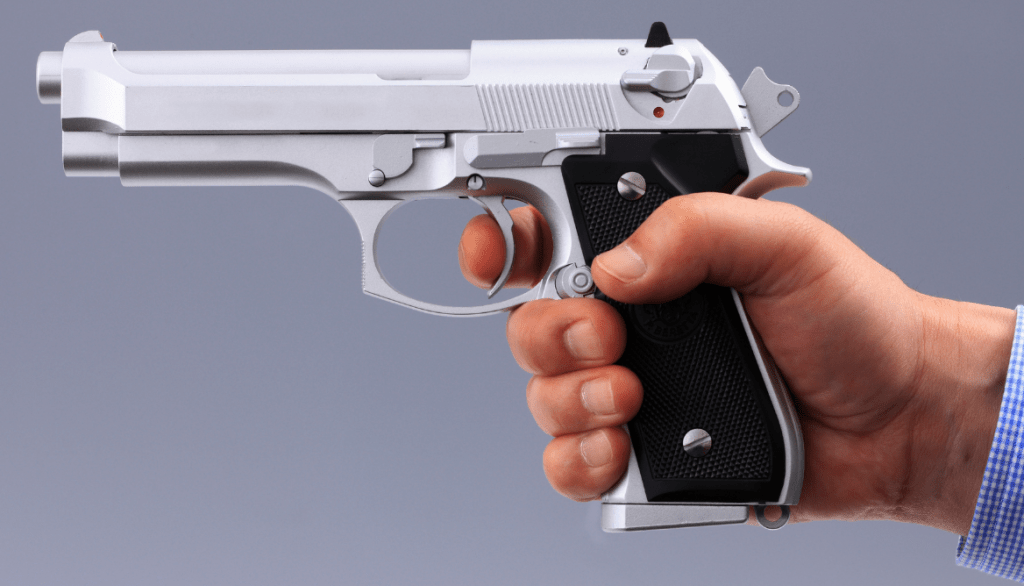
Read through to find the truth on dry firing various firearms, and learn how to ensure your gun is safe during dry fire.
Review: What is Dry Firing?
Dry fire is pulling the firing pin while your magazine and chamber are unloaded or empty. You will then hear clicks from the weapon’s hammer or firing trigger hitting the chamber or snap caps.
Despite posing a risk for your weapon, dry firing is used for different purposes, mainly in training for the following techniques:
- Sight alignment.
- Your trigger control.
- Firearm’s recoil management.
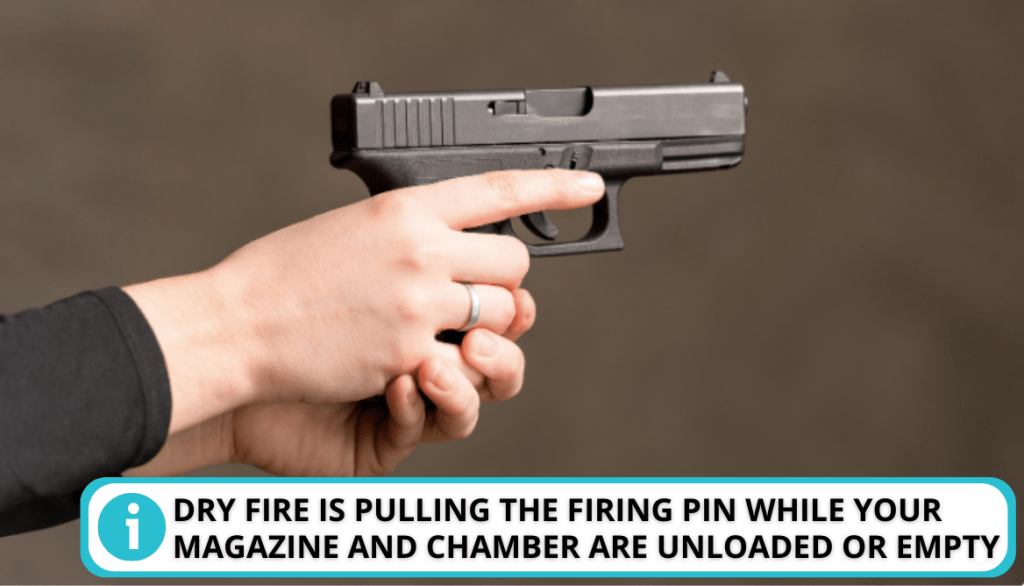
Additionally, it is used for numerous gun-related maintenance through the following factors:
- During a firearm’s parts checks.
- Gun’s test.
- Familiarization with a gun’s mechanics, especially when it’s new. This factor also helps you practice reloads and error corrections.
Dry Firing Capability: Rimfire Vs. Centerfire Guns
Rimfire or centerfire guns are the most common varieties of guns available in the market. You can expect differences between the two when you compare the dry firing concept in each.
Dry Firing with Rimfire Weapons
A rimfire gun has a specific design that discourages you to dry fire. These varieties include the 22 Mag and 22 long rifles, whose rimfire ammunition is recognizable by confirming the following factors:
- A lack of a circular primer.
- Inclusion of a rim at the bottom of the case.
Specific rimfire firearms, like the Ruger 10/22, might have a gun safety feature that includes a stop for your firing pin. Such mechanisms keep the trigger from striking the empty chamber.
- You should still avoid dry firing it constantly as the trigger pull can cause damage, wear out, and ultimately malfunction.
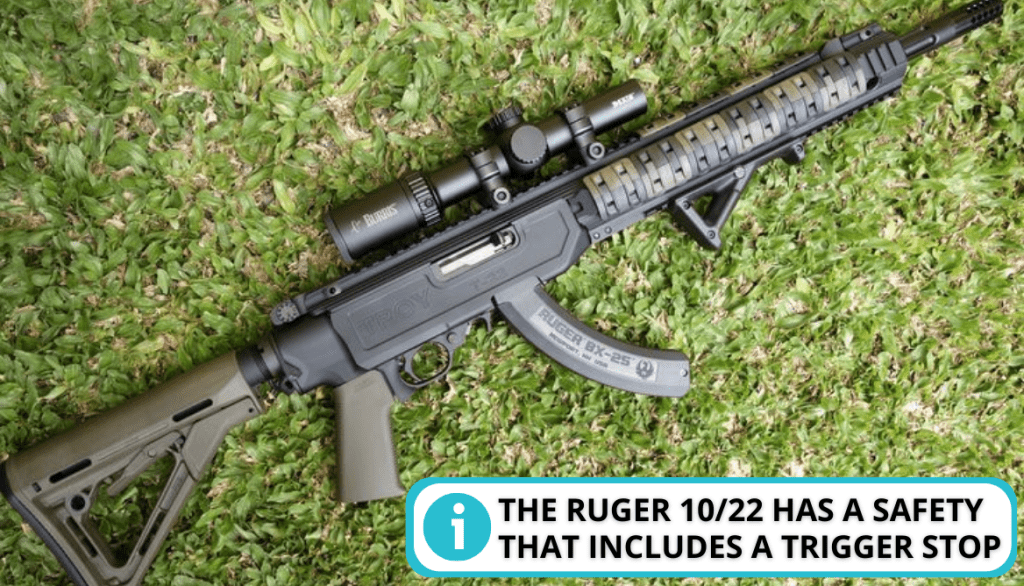
Dry Firing with Centerfire Guns
You can safely dry fire using centerfire guns with their firing pin, not striking anything. However, traditional varieties like revolvers or Colt Single Action Army are unsafe for dry firing, lacking the feature to keep the firing pin in place.
Ways To Dry Fire & Protect Your Gun’s Firing Pin
Regardless of your gun variation, there are safety steps for dry firing. We’ve covered you with tips for revolvers, semi-automatic guns, and striker-fired pistols.
1. Can You Dry Fire A Revolver?
Revolvers involve specific dynamics due to their trigger handling style and how their bullet chamber operates. Before the process, remember to check if any bullets are still left in the revolver. Unlike semi-automatic guns, here’s how to safely dry fire this gun.
- Use snap caps: Work with snap caps or dummy bullets suited for your revolver’s caliber to shield the firing pin strikes and minimize impact to the internal parts. Snap caps are designed to mimic the mass and contact of live ammo.
- Working on sight alignment: You can try the practice in a range, where you’ll check the front and rear alignment, similarly to how you’ll do it with live bullets.
- Trigger control practice: Apply continuous and steady press to the trigger till the hammer falls. Maintain a firm hold on the revolver while limiting unnecessary movement.
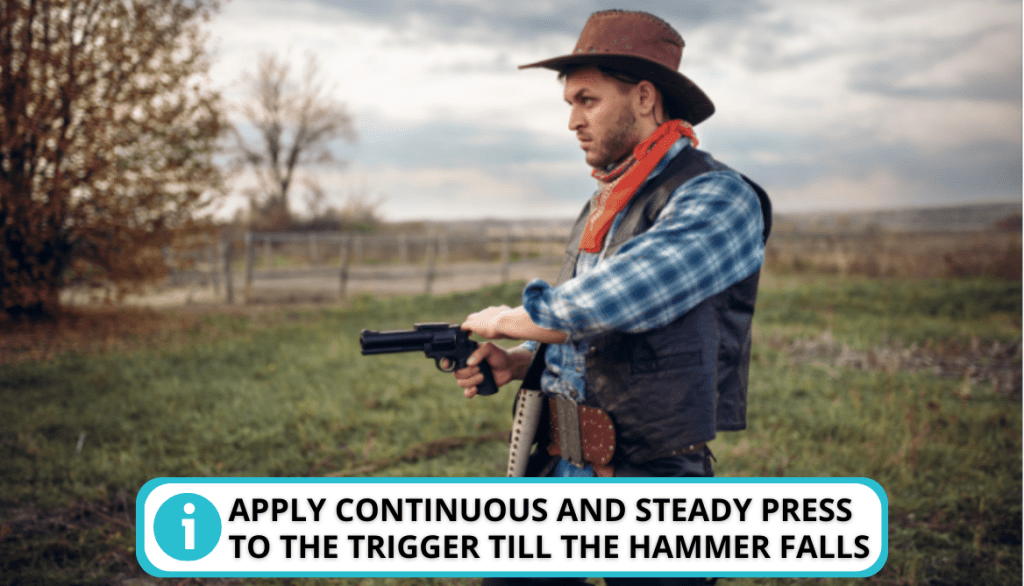
Here is a brief analysis of the revolver varieties and their dry-firing procedures:
- Double-Action revolver: The revolver variety can easily manage its trigger system during the dry fire and handle any other mechanics. This makes their sight alignment easier.
- Single-Action Revolver: Single-action revolvers will require you to manually cock the hammer. To avoid extra wear, avoid using too much effort when cocking the hammer.
2. Steps To Dry Fire A Traditional Semi-Auto Gun
Dry firing an old semi-automatic weapon is different from a revolver but similar regarding safety tips. It is also called a hammer-fired pistol.
Here are some safety steps to take during a firing practice:
- Utilization of snap caps: Your semi-auto gun must hit something when blank firing. Usually, a few times of dry firing won’t harm your weapon’s firing pin, but acquiring snap caps or dummy rounds will ensure the damage that happens over time is controlled.
- Always manually cock the gun’s hammer: You must do the manual cocking if you own older firearms. The action will safely prepare your weapon for firing.
- Always ensure it’s unloaded in the following dry-firing session: Many shooters use bullets in the last rounds after they’ve dry-fired. It is easy to forget your gun is loaded, even if you use fake ammunition.
- Breaking your grip: Removing your grip is essential when you stop firing, especially when training with live cartridges. Apart from damaging your firing pins, you can accidentally shoot and injure yourself with the gun’s components still active.This training is better executed with an unloaded chamber, where you learn how to reset your semi-auto gun and yourself after each shot.
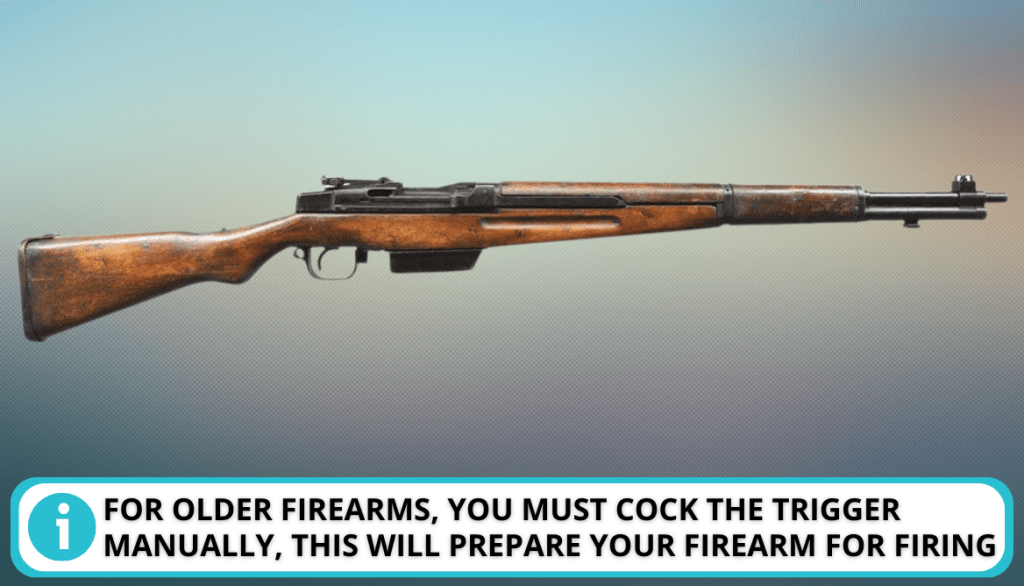
3. Can You Dry Fire A Striker-Fired Pistol
The striker-fired pistol is quite popular due to its simplistic design, but its inconvenience does arise when dry-fired. Using rimfire ammunition, you are advised to avoid dry firing the pistol, but there are a few ways you can deal with this:
- Safety confirmation: Always remove the magazine to ensure it’s unloaded, similar to the other guns.
- Confirm with the chamber indicator: Checking if you have a loaded chamber should be done after a magazine check. The striker-fired pistol comes with help through an indicator to visually check if the section has no live rimfire ammunition.
- Sight alignment checking: Try aiming at a safe target or an approved shooting area, ensuring the front and rear sights are correctly aligned.
- Trigger Control dry firing training: The action will involve maintaining a solid grip while applying constant pressure to the trigger. You should pay extra attention to trigger reset and follow through, as it is a critical process of dry fire effectiveness.
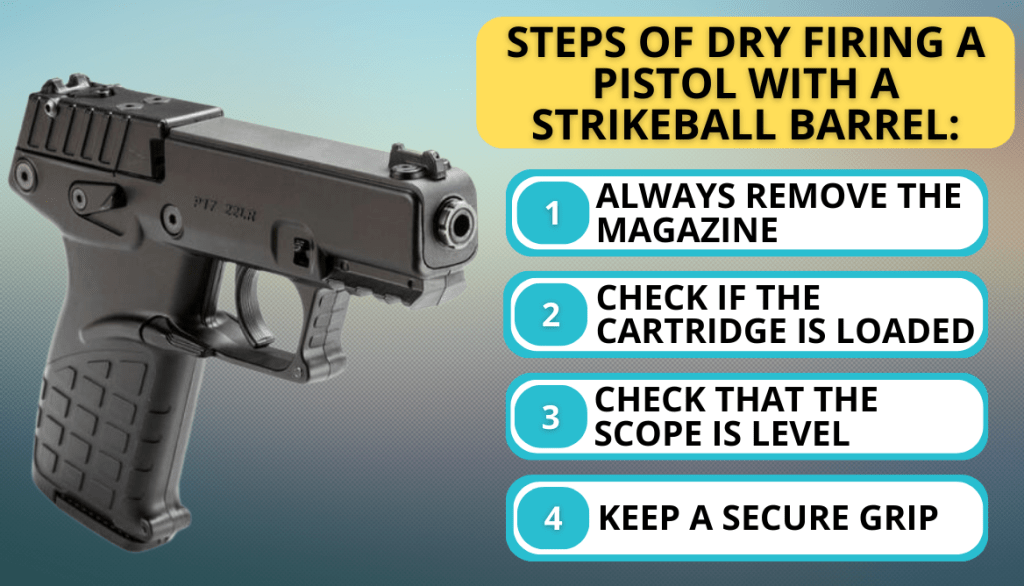
Safety Tips for Dry Firing and Firing Pin Strikes Control
The unpopular opinion in the gun industry is the danger of dry firing. The concept, however, comes with its advantages, especially if you’re a newcomer to firearm handling.
It is, therefore, essential to find common ground with the two contradicting factors, and it involves a step-by-step training and handling process, as illustrated below:
1. Ensure there are no Interruptions Within Your Surrounding
Most of us might not get access to a shooting range for dry fire training, leaving us to work indoors or around homesteads.
- Depending on your working space and who you live with, the area can have disturbances.
- Locking your doors to keep unwanted hands (kids) from unloaded magazines is vital.
- No distractions will also help when focusing and finding the perfect alignment.
2. Always Unload Your Magazines Chamber
Whether using a modern firearm or a traditional weapon, unloading your gun when not in action can help avoid accidental firing. This is a huge factor during dry firing training, where you can avoid the next dangers:
- Impact of the unexpected recoil.
- The danger of unintentionally injuring a loved one or yourself.
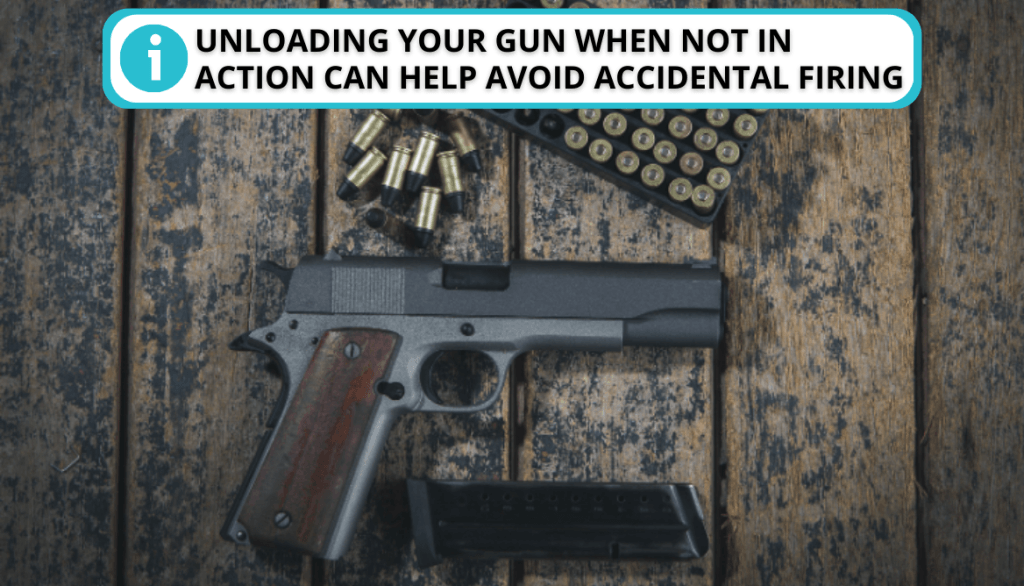
3. Double Check for Live Ammunition in Other Components
Modern firearms allow you to check your chamber, which most amateur shooters easily ignore.
- You can check by inserting your small finger in the chamber section.
- Checking a revolver involves running your fingers through each bullet hole opening.
4. Stay Away from Ammunition Storage
A shooter’s consciousness is accustomed to working with loaded firearms, thus the trickiness of sub-consciously loading your magazine even after the previous exercise. You should stay away from your cartridge storage and avoid the temptation to work with even a single bullet when dry firing.

5. Choose a Safe Bullet Backstop
It would help if you always avoided dry fire unless you have a sturdy backstop. This is anything that consistently stops a round fired from your gun’s most powerful ammunition.
6. Always Dry Fire Towards the Target
Aimless firing can be dangerous even with a free chamber, thus requiring a ‘shooting target.’ The object should be disposable or can be taken down after the exercise.
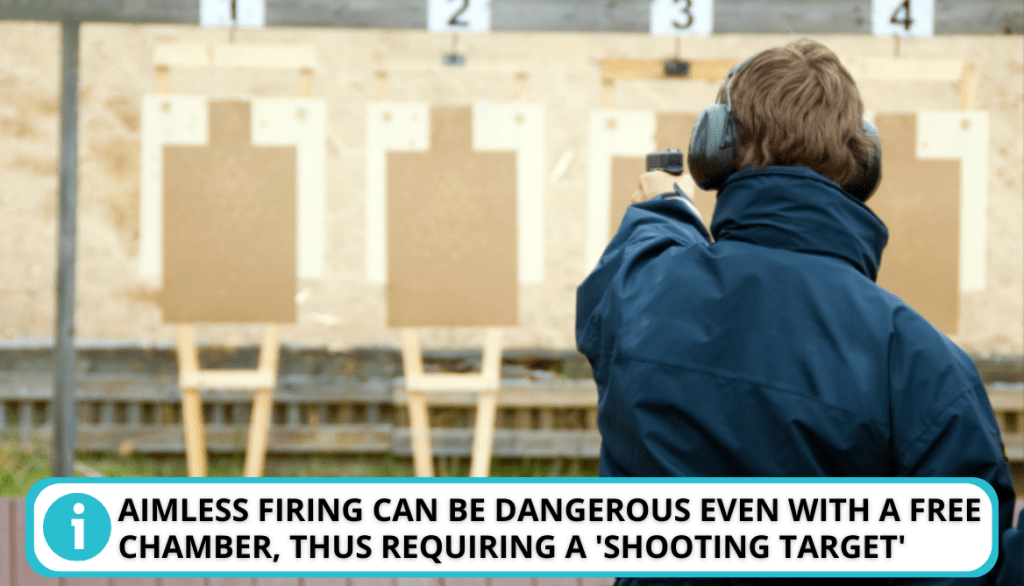
7. Execute Another Ammunition Check
Though not as thorough as the previous time, you can do another check while cocking the gun or repositioning yourself.
8. Focus on the Dry Firing Practice
This is important if it’s your first time handling a gun. After the bullet checks, you might want to focus on how to execute the shooting process.
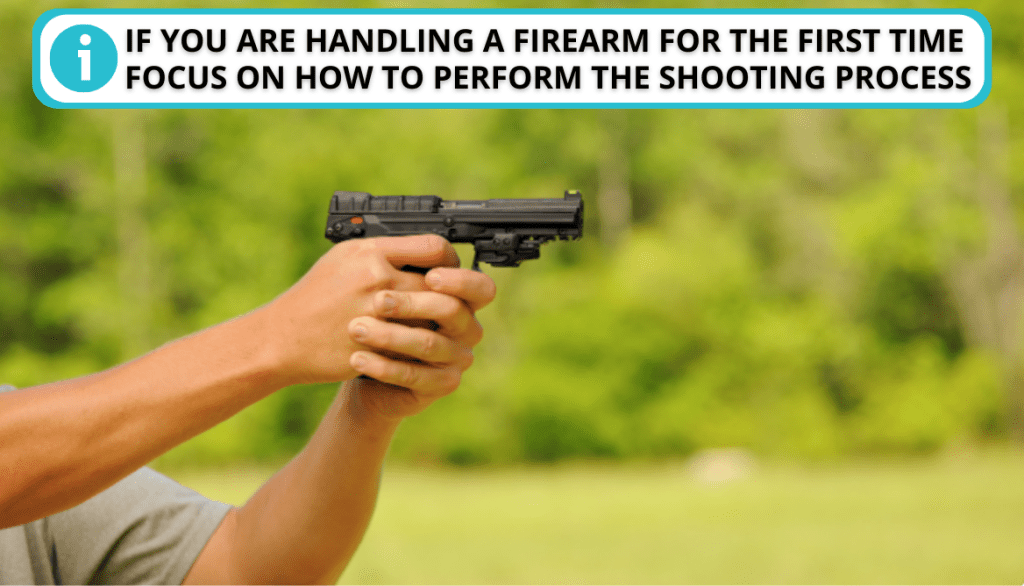
9. Begin the Dry Firing Process
Following the above processes, you’ll have at least 15 minutes of smooth, dry firing. Note that each move and action you take is recorded in your mind, where every gun sound should be consistent.
10. Take the Target Down Immediately
Taking your shooting target down step means the practice is over, and you can check the firing pin’s state. Now revert to normal mode to avoid pointing your gun unintentionally, as your mind can still think you are in shooting action.

11. Put Your Gun Back in its Safe
This step ensures you get time to cool off, considering the pressure of handling a firearm.
12. Reload as You Say it out loud
More like making a personal affirmation. You can say out loud, “I’m loading my weapon,” to have it in your mind on the issue’s sensitivity. You can say it repeatedly to ensure you don’t forget.
The Four Rules that a Dry Fire Breaks
With the uncertainty of dry firing, it is typically excluded from the four basic gun rules. These concepts include the following:
Rule One: All guns Should be loaded
All expert shooters will agree that all firearms should always be loaded, a factor primarily discouraged when dry firing. Also, the basics of the shooting process aren’t fulfilled with an empty chamber.
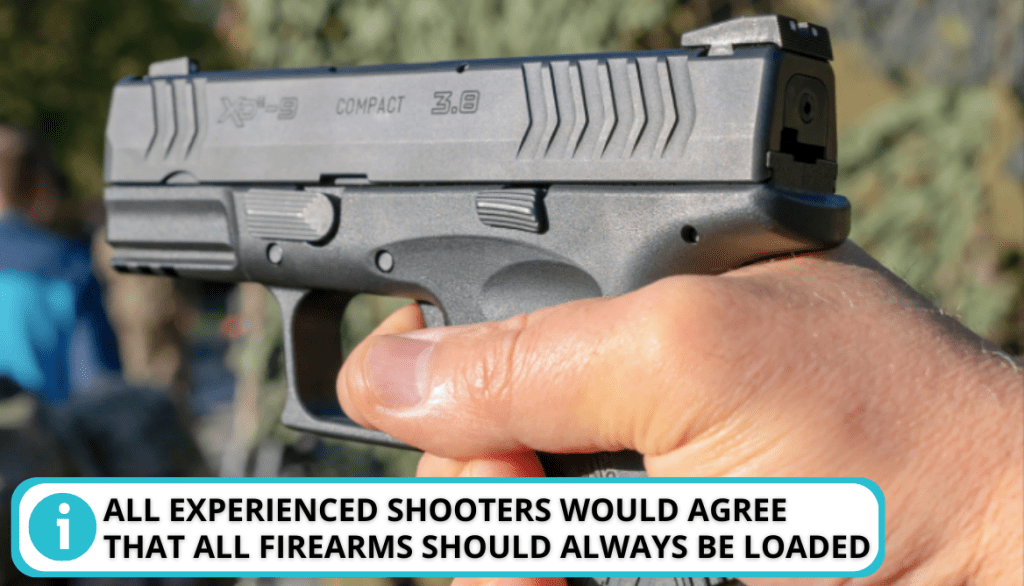
Rule Two: Not Pointing Your Gun at Anything You Don’t Intend to Shoot
You are free to point at any subject as the gun is unloaded, which is the opposite when dealing with any armed firearm. You should follow the steps and safety tips in the previous section, especially on having a backstop and a specific shooting target.
- The emphasis on the rule is aimed at protecting those around you, mainly toddlers who might not know the dangers involved.
- Whether dealing with a centerfire gun or rimfire firearm, the factor is constant.
- It also applies to minimizing the damage from your live ammunition.
Rule Three: Keeping your Finger from the Trigger Until You Focus on the Target
Your point of focus during a dry fire practice is crucial in helping you minimize the damage during the actual shooting. Utilizing a dummy round to exercise your aiming is best, which will also help you save your bullets.
- The procedure starts by avoiding contact with the trigger if your eyes aren’t locked to your target.
- You can conveniently use the following for this particular dry fire practice piece of paper, thick books, or falling steel objects.
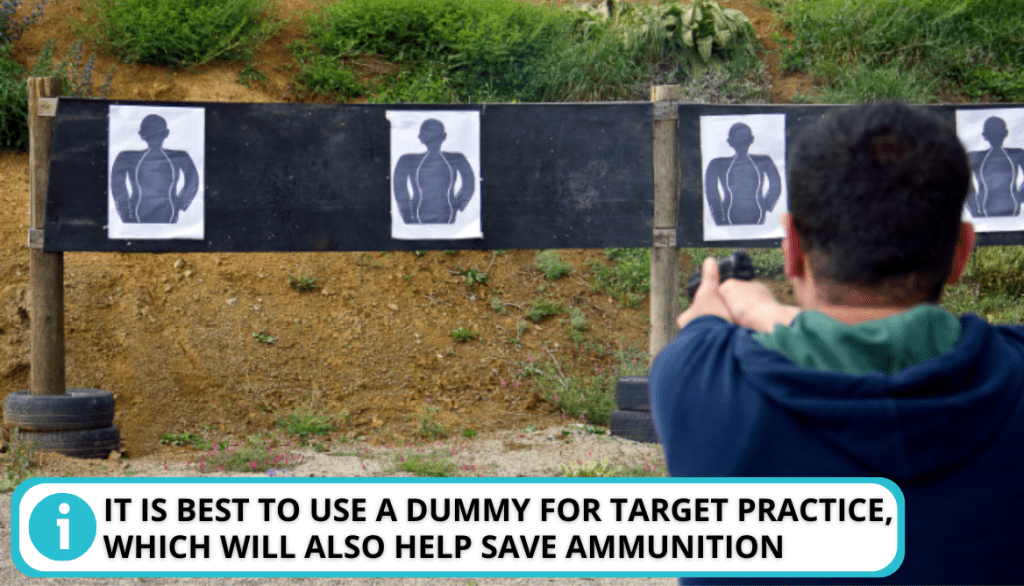
Rule Four: Confirming What is Beyond Your Target
Your live ammunition can go through a chosen target, making it essential to confirm subjects and objects beyond. This includes dry fire practice in front of a wall.
- Additionally, the tip does count when using dummy rounds, especially on lighter paper and book targets.
- Finding solid backstops, preferably thick books or steel/metallic objects, are ideal.
How to Appropriately Dry-Fire Practice
So, how can you train with an unarmed gun? With an understanding of the safety features to follow, you’ll get a hint of what’s required from your actions. There are other factors to consider, and here is everything you need to know before a dry fire practice.
1. Practice Your Follow-through Shots
You can do the following instead of immediately withdrawing your finger from the trigger.
- Do a few mental counts before loosening your grip or allowing the sights to wander.
- In the shooting range, you aim to retain the trigger to the rear until the targets are realigned. This allows for quicker follow-up shots without shaking.

2. Ensure What You Wear is Fit for Shooting Purposes
Expert shooters insist on having official shooting attire, whether your gun is armed or unloaded. Here are things to consider regarding your clothing.
- Have everything tucked in, which plays a role when drawing a concealed carry gun.
- Avoid your normal rugged or buggy clothing for easy movement when handling the firearm. A buggy top wear can distract your sight alignment, leading to missed shots.
- Ensure your clothes help with weapon dynamics, like storing helpful gadgets like magazines if you will use them later.
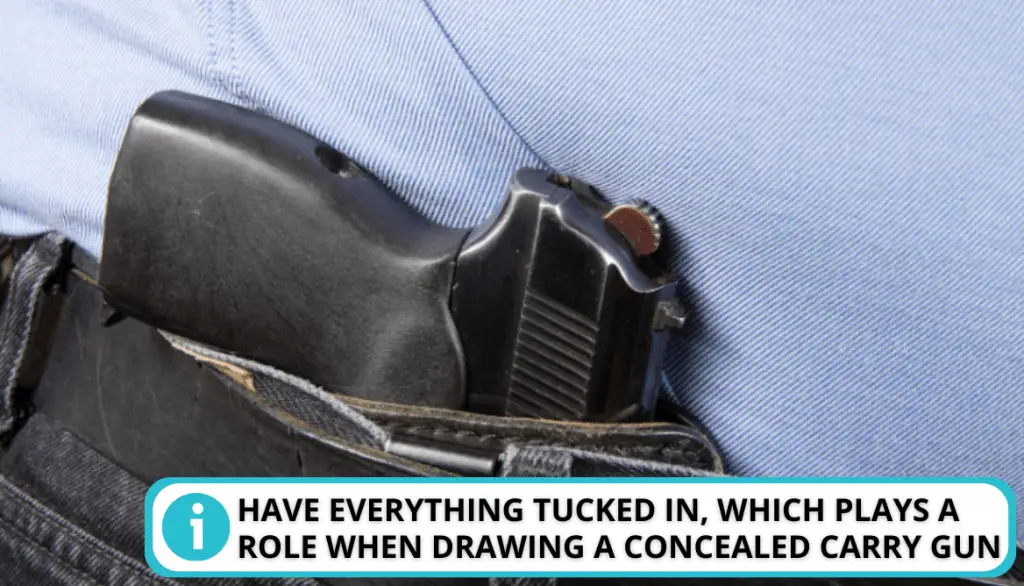
3. Follow Shooting Range Rules
Other subjects are in jeopardy if you don’t follow the rules. They are generally simple and easily ignored by newcomers in the shooting area. You should typically avoid these acts:
- Shooting when moving.
- Kneeling while in action.
- Shooting beyond targets.
The above acts might be harmless when dry firing, though it’s key to note them before progressing to loaded weapons. Therefore, you can train using the concepts to better your shooting skills with rimfire guns and centerfire weapons.
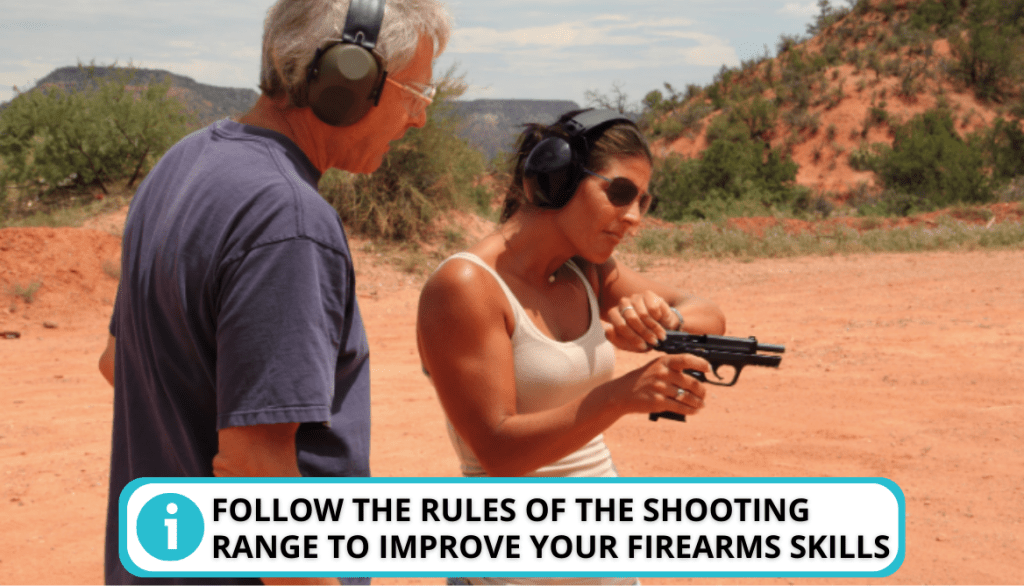
4. Bring a Video Camera
Recording how you handle an unloaded firearm is crucial, especially without a training partner. You get to review the entire process, from when you draw the concealed carry, thus correction in the upcoming sessions.
- You also get to hear the reaction from your firing pins, thus noticing any slight changes before following up shots.
- Most importantly, you’ll review your mistakes, if any.

Verdict On Dry Firing
We hope by now the write-up solves the uncertainties you had on dry firing.
- As mentioned, the effects of a dry fire depend on your gun’s type, where those using rimfire guns are advised to practice the act at a minimum.
- If you poorly execute your dry fire practice, components like the firing pin also attract damage even when using a modern centerfire gun.
- Therefore, researching your gun’s type and shooting dynamics is essential before you dry fire.

FAQ
Does “dry firing” actually damage a gun?
Dry firing can damage parts like the firing pin when excessively done and on firearm varieties such as rimfire guns.
Is dry firing a bolt action rifle bad?
Bolt action rifles can be dry-fired when you use snap caps to protect their firing pin.
Does dry firing really hurt a bolt action rifle?
Bolt action rifles are safe from consistent dry firing, but it is always key to take necessary safety measures, like those discussed in the article.
Does dry firing an airsoft gun hurt it?
Dry firing an airsoft firearm can damage your gun, especially the firing pin; thus, you shouldn’t do it excessively.
Is dry fire dangerous?
Dry fire is not dangerous for all weapons; you can normally do it with many modern guns. If you use a vulnerable firearm, you can follow the mentioned tips to protect gun parts.
Should I reload my gun before firing dry practice?
Dry practice should be done with an unloaded firearm, as it is a safety hazard for you and those around you.
Conclusion
Dry firing falls between the good and the bad, with the advantages outweighing the cons. The activity comes in handy to help you practice with your gun, mainly when familiarizing yourself with a new weapon. The action will also help if you’re a beginner in handling firearms.
If worried about your gun’s safety, you can employ numerous discussed factors like using snap caps to shield your firing pin. This is ideal if you use a traditional rifle like the rimfire gun.
So, have you tried to dry fire and damage your gun? Comment below with your response, and inform us of other possible solutions for related defects.
